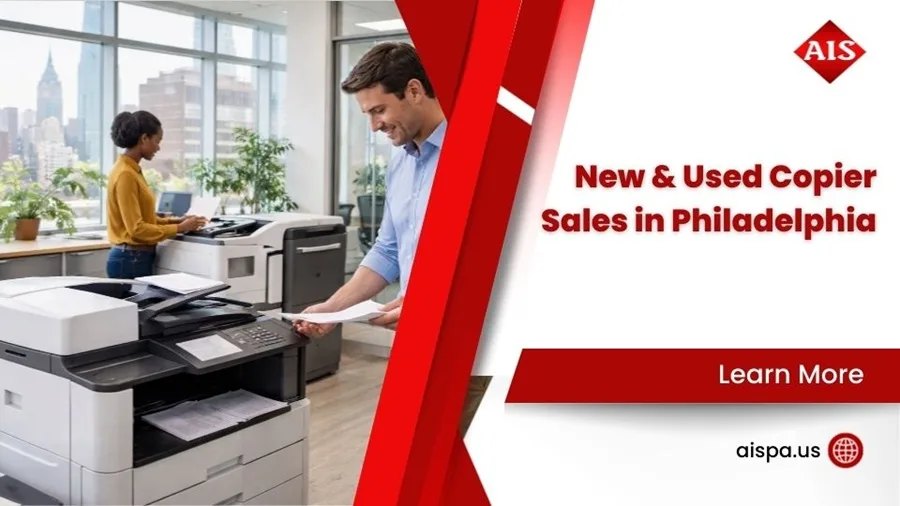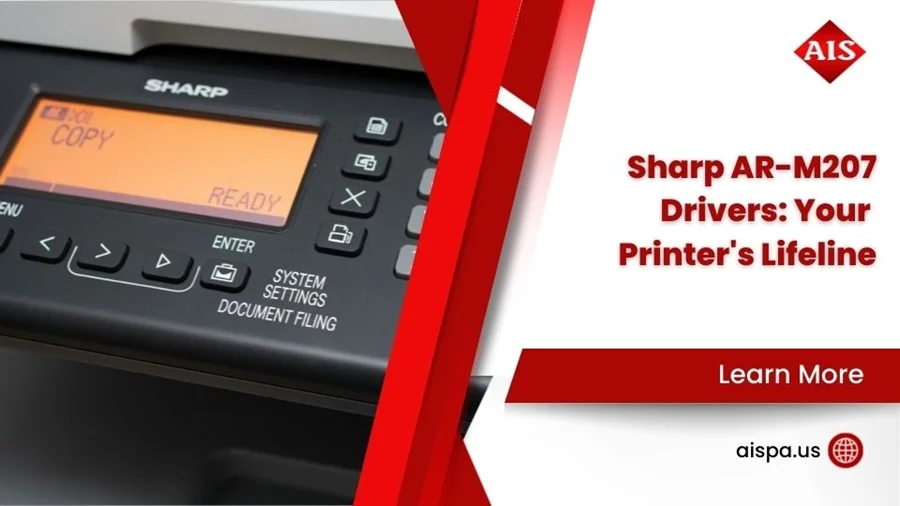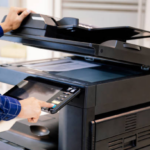Why More Businesses are Opting Printer Leases in King of Prussia
Opting Printer Leases in King of Prussia
Managing office equipment efficiently can significantly impact a company’s productivity and bottom line. One trend that has gained traction among businesses in King of Prussia is leasing printers and copiers. Printer leases offer a flexible, cost-effective solution that allows businesses to stay up-to-date with the latest technology without the hefty upfront costs associated with purchasing.
This article explores why more businesses are opting for printer leases and delves into the various aspects of printer leasing, providing a comprehensive guide for business owners considering this option.
Understanding Printer Leases for Businesses

What is a Printer Lease?
A printer lease is an agreement between a business and a leasing company where the business rents a printer or copier for a specified period. This arrangement allows businesses to use high-quality office equipment without the need to purchase it outright. Leasing terms typically range from one to five years, and the business pays a fixed monthly fee throughout the lease term.
Differences Between Leasing and Buying
When deciding whether to lease or buy a printer, businesses need to consider several factors. Buying a printer or office copier involves a significant upfront cost, but the business owns the equipment outright. On the other hand, leasing spreads the cost over time, which can help manage cash flow. Additionally, leasing often includes maintenance and support services, which can reduce the overall burden of managing office equipment.
Key Terms in Printer Leasing
Lease Agreement
The lease agreement outlines the terms and conditions of the lease, including the duration, monthly payments, and any additional costs. It’s crucial for businesses to thoroughly review this agreement to understand their obligations and the services included.
Lease Term
The lease term refers to the length of time the business will lease the printer or copier. Common lease terms range from 12 to 60 months. Shorter terms offer more flexibility to upgrade equipment, while longer terms may provide lower monthly payments.
Monthly Payment
The monthly payment is the fixed amount the business pays to the leasing company each month. This payment often includes the cost of the equipment, maintenance services, and any additional features agreed upon in the lease.
Upfront Costs vs. Monthly Costs
Leasing a printer typically involves minimal upfront costs, making it an attractive option for businesses looking to conserve capital. Instead of a large initial investment, businesses make manageable monthly payments, which can be easier to budget for.
Benefits of Leasing Printers and Copiers
Cost-Effective Solutions
Leasing printers and copiers can be a cost-effective solution for businesses. The spread-out monthly payments help manage cash flow, and the lower upfront costs mean businesses can allocate their capital to other critical areas.
Managing Cash Flow
By leasing printers, businesses can better manage their cash flow. The predictable monthly payments make budgeting easier and help avoid large, unexpected expenses.
Lower Upfront Costs
One of the main advantages of leasing is the lower upfront cost. Businesses do not need to spend a significant amount of money at once, freeing up resources for other investments.
Flexibility and Scalability
Leasing provides businesses with the flexibility to upgrade their equipment as technology advances. This is particularly important in today’s fast-paced tech environment, where staying current can provide a competitive edge.
Upgrade Options
Many leasing agreements include options to upgrade the equipment at the end of the lease term or even during the lease. This ensures businesses always have access to the latest technology without the need for a significant additional investment.
Adjusting to Business Growth
As businesses grow, their printing needs may change. Leasing allows businesses to scale their equipment accordingly, ensuring they always have the right tools to meet their needs.
Specific Advantages of Printer and Copier Leases
Technology Upgrades
Leasing enables businesses to keep up with technological advancements. Instead of being stuck with outdated equipment, businesses can upgrade to newer models that offer improved functionality and efficiency.
Maintenance and Service Inclusions
Most leasing agreements include maintenance and support services. This means the leasing company takes care of repairs and regular maintenance, reducing the burden on the business and ensuring the equipment operates smoothly.
Avoiding Equipment Obsolescence
Technology evolves rapidly, and office equipment can quickly become obsolete. Leasing helps businesses avoid obsolescence by providing opportunities to upgrade to the latest models, ensuring they always have state-of-the-art equipment.
Types of Printers and Copiers Available for Lease
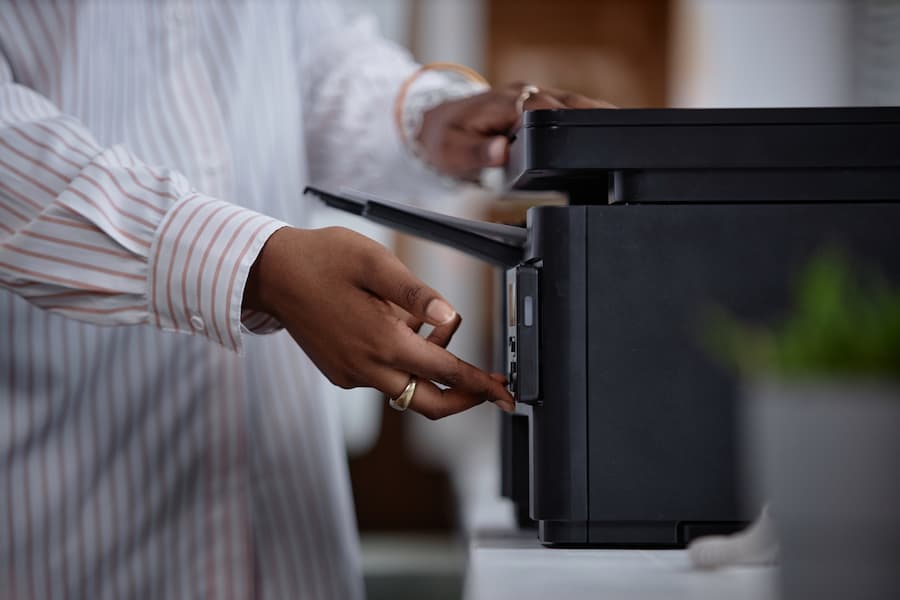
Office Printers
Office printers are essential for day-to-day operations, providing reliable and efficient printing solutions for various business needs.
Multifunction Copiers
Multifunction copiers combine printing, scanning, copying, and faxing capabilities in one device, making them a versatile choice for busy offices.
Laser Printers
Laser printers are known for their high-quality prints and speed, making them ideal for businesses with high-volume printing needs.
Commercial Copiers
Commercial copiers are designed for heavy-duty use, suitable for businesses that require high-volume copying and printing.
Xerox AltaLink Series
The Xerox AltaLink series offers advanced features and robust performance, making it a popular choice for businesses looking for reliable, high-quality copiers.
Factors to Consider When Choosing a Lease Agreement
Business Needs and Budget
When choosing a lease agreement, businesses should consider their specific needs and budget. This includes evaluating the type of equipment required, the volume of printing, and the available budget for monthly payments.
Lease Duration
The lease duration should align with the business’s needs and future plans. Shorter leases offer more flexibility, while longer leases may provide cost savings.
Copier or Printer Type
Choosing the right type of copier or printer is crucial. Businesses should assess their printing and copying needs to select the most suitable equipment.
Additional Costs and Fees
It’s important to be aware of any additional costs and fees associated with the lease, such as maintenance fees, overage charges for exceeding print quotas, and costs for upgrading equipment.
Evaluating Leasing Companies
Reputable Leasing Companies
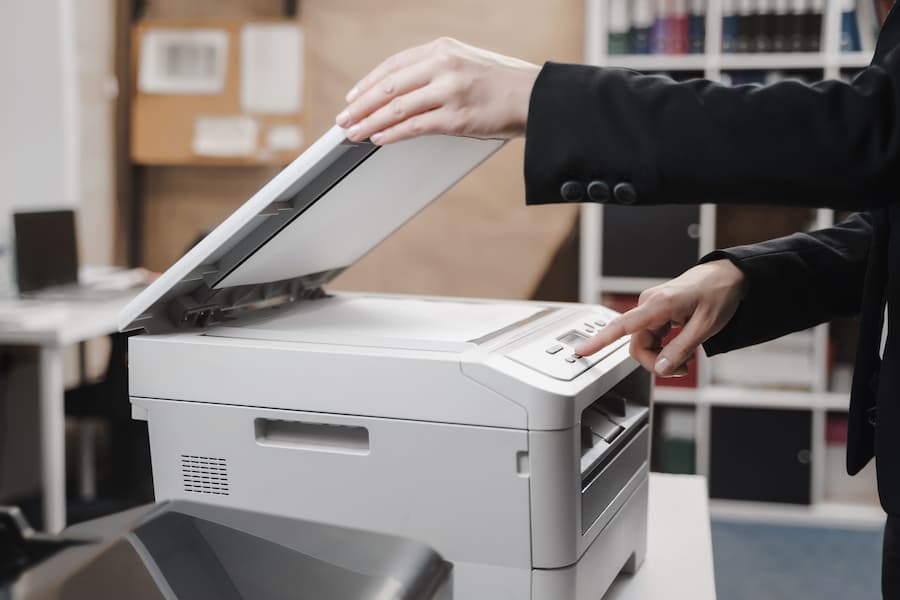
Selecting a reputable leasing company is essential for a smooth leasing experience. Businesses should research potential leasing partners, read reviews, and ask for references.
Terms and Conditions of Lease Contracts
Thoroughly reviewing the terms and conditions of lease contracts can help businesses avoid unexpected costs and obligations. It’s important to understand what is included in the lease and what responsibilities lie with the business.
Customer Support and Service
Good customer support and service are critical when leasing office equipment. Businesses should ensure their leasing partner provides timely support and efficient service to minimize downtime.
The Leasing Process: From Agreement to Implementation
Steps to Lease a Copier or Printer
Leasing a copier or printer involves several steps to ensure a smooth process. Here is a step-by-step guide:
- Assess Business Needs: Determine the volume of printing, required features, and budget constraints.
- Research Leasing Companies: Identify reputable leasing companies, read reviews, and seek recommendations.
- Request Proposals: Contact multiple leasing companies to get proposals and compare their offerings.
- Review Lease Agreements: Carefully review the terms and conditions, focusing on the lease term, monthly payments, and included services.
- Select Equipment: Choose the copier or printer that best meets your business needs.
- Finalize the Lease Agreement: Sign the lease agreement after negotiating any terms if necessary.
- Schedule Delivery and Installation: Coordinate with the leasing company for the delivery and installation of the equipment.
- Training and Setup: Ensure employees are trained on using the new equipment and set up any required software.
Reviewing the Lease Agreement
Before finalizing the lease, it is crucial to review the agreement in detail. Look for:
- Lease Term: Ensure the duration suits your business plans.
- Monthly Payment: Confirm the monthly cost and what it includes.
- Maintenance and Service: Check if maintenance and service are covered.
- Upgrade Options: Understand the terms for upgrading the equipment.
- End-of-Lease Options: Know what happens at the end of the lease term, including renewal or return options.
Installation and Setup
Once the lease agreement is signed, the leasing company will deliver and install the equipment. Proper setup is essential to ensure the equipment functions correctly. The leasing company should provide training for your staff to maximize the efficiency of the new printer or copier.
Managing Your Lease Throughout the Term
Regular Maintenance and Service
Most leasing agreements include regular maintenance and service. This ensures the equipment operates smoothly and reduces downtime. Maintenance typically covers routine check-ups, replacement of worn parts, and software updates.
Upgrading Equipment
One of the significant advantages of leasing is the ability to upgrade equipment. If your business needs change or newer technology becomes available, you can upgrade your printer or copier. It’s important to understand the terms for upgrading in your lease agreement.
Handling Repairs
Leased printers and copiers often come with repair services. If the equipment breaks down, the leasing company should provide prompt repair services to minimize disruption to your business operations. Ensure you have a clear understanding of the repair process and response times.
Cost Analysis: Leasing vs. Buying
Monthly Fees vs. Upfront Costs
Leasing and buying have different financial implications. Leasing involves lower upfront costs but requires ongoing monthly payments. Buying requires a significant initial investment but no recurring lease payments. Businesses must weigh these factors to determine the best option.
Total Cost of Ownership
The total cost of ownership (TCO) includes the purchase price, maintenance, repairs, and potential upgrades. Leasing can have a lower TCO due to included maintenance and the ability to upgrade without purchasing new equipment.
Financial Implications for Businesses
Leasing can provide financial flexibility, allowing businesses to allocate capital to other areas. The predictable monthly payments make budgeting easier, and the lower initial costs can improve cash flow.
Common Challenges and Cons of Leasing Printers and Copiers
Potential Drawbacks: While leasing has many advantages, there are potential drawbacks to consider:
- Long-Term Costs: Over time, leasing can be more expensive than buying.
- Contractual Obligations: Businesses are bound by the terms of the lease agreement, which may include penalties for early termination.
- Hidden Costs: There may be additional fees not apparent at the outset.
Hidden Costs: Leasing agreements can include hidden costs such as overage charges for exceeding print quotas, fees for early termination, and costs for upgrading equipment. It’s essential to identify these costs upfront.
Lease Term Limitations: Lease terms can limit flexibility. Businesses may find themselves locked into a contract that no longer meets their needs if their requirements change during the lease term.
Mitigating Challenges
Negotiating Lease Terms: Negotiating favorable lease terms can help mitigate potential challenges. Businesses should seek to include clauses that allow for flexibility, such as early termination options and clear upgrade paths.
Thoroughly Reviewing Agreements: A thorough review of the lease agreement is critical. Businesses should understand all terms, fees, and obligations before signing. Consulting with a legal advisor can be beneficial.
Choosing the Right Leasing Partner: Selecting a reputable leasing partner is crucial. A reliable partner will offer transparent terms, excellent customer service, and support throughout the lease term.
What People May Also Ask
What is included in a standard lease agreement?
A standard lease agreement typically includes the lease term, monthly payment amount, maintenance and repair services, and terms for upgrading or returning the equipment.
How does leasing save money compared to buying?
Leasing saves money upfront by eliminating the need for a large initial investment. It also includes maintenance and repair services, which can reduce ongoing costs.
What happens at the end of the lease term?
At the end of the lease term, businesses typically have several options: renew the lease, upgrade to new equipment, purchase the equipment at a residual value, or return the equipment.
Can I upgrade my leased equipment?
Many leasing agreements include options for upgrading equipment during the lease term. Businesses should review their lease terms to understand the process and any associated costs.
What are the typical lease durations?
Typical lease durations range from 12 to 60 months. The appropriate lease term depends on the business’s needs and financial situation.
Conclusion
Leasing printers and copiers offers numerous advantages for businesses in King of Prussia, including cost savings, flexibility, and access to the latest technology. By understanding the leasing process, evaluating potential challenges, and choosing the right leasing partner, businesses can make informed decisions that enhance their operations and support their growth.
Whether considering leasing or buying, businesses should assess their specific needs and financial situation to determine the best approach for their office equipment.
For more information and services you can contact us for a free quote and estimation.
- Address: 165 Veterans Way, Warminster, PA 18974
- Email: sales@aispa.us
- Call Us: (215) 999-8445




